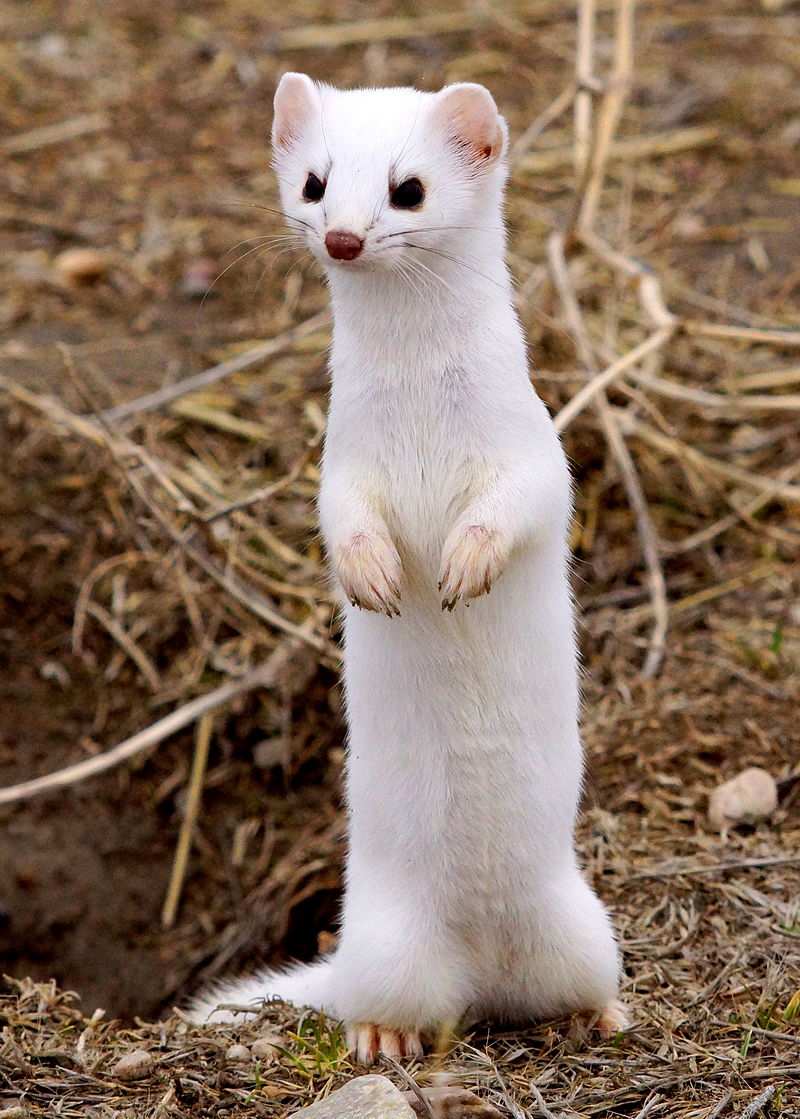In fall, about 21 mammal and bird species worldwide, mostly in northern regions, change their coat or plumage colors from brown to white. White provides camouflage against predators as snow covers the landscape in winter. In spring, these same animals shed their white colors and return to brown, which provides similar camouflage when next to the brown leaf litter on the ground. Some animals can turn white and some remain brown year round.
![By D. Gordon E. Robertson (Own work) [CC BY-SA 3.0 (https://creativecommons.org/licenses/by-sa/3.0) or GFDL (http://www.gnu.org/copyleft/fdl.html)], via Wikimedia Commons](https://upload.wikimedia.org/wikipedia/commons/3/38/Snowshoe_Hare%2C_Shirleys_Bay.jpg)
Only one or at most a few genes control the ability to change color seasonally. Natural selection is a powerful force determining the abundance of these genes in different environments. In a paper in the March 2 issue of Science, Scott Mills and colleagues show that the probability of turning white in winter increases with longer durations of winter snow cover for Japanese hare, white-tailed jackrabbits, and least and long-tailed weasels. With fewer than 40 days of snow cover, only 20% of the individuals of each species have the genes for turning white. But with more than 160 days of snow cover, over 80% of the populations of each of these species have the genes for turning white. In the broad range of snow cover between 40 and 160 days, the populations contain a roughly even split of winter-white and winter-brown individuals. During periods of snowy winters, white individuals have greater survival and there are more children born the following spring possessing these genes. During stretches of snow-free winters, brown individuals have greater survival and more children. Under these conditions, natural selection preserves both color forms. In order to maintain these species in a warming climate with gradually decreasing snow cover, Mills and colleagues suggest that we must conserve these particular populations with both sets of genes, thereby hedging our bets.


But there could be further complications. When the environment goes through large changes, there is a period of instability when it rapidly switches back and forth between two states (snowy and snow-free winter landscapes following one another, for example). One year there is strong selection against one trait (brown) with selection against the other (white) the following year. This instability in the environment creates corresponding instability in the organism's gene pool. It is important that the population density not drop too low during periods of environmental instability because low survival of the animals with the wrong color, one year after another, could drop the population below the minimum size needed to be viable. Hares and weasels are famous for going through boom and bust cycles every four years or so (see Chapter 14 in my book What Should a Clever Moose Eat?). During their population lows, the fate of these species may depend upon whether snow conditions align by chance with the abundance of the coat color that provides the best camouflage.
As with any good research, answering one question opens up newer and even more interesting ones. Incorporating animal population cycles into the interesting findings of Mills and colleagues seems to be a next step in designing strategies to conserve these species in northern environments.

